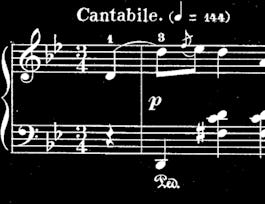This course is about how music works. It is about the relationship between the technical and aesthetic details of music. It is also about how developing a meaningful theoretical vocabulary can help you think and talk about musical style, and how learning that vocabulary can expand your appreciation for music.


Approaching Music Theory: Melodic Forms and Simple Harmony
Taught in English
Some content may not be translated
49,968 already enrolled
Course
Gain insight into a topic and learn the fundamentals

Instructor: Marc Lowenstein
Top Instructor
(153 reviews)
Recommended experience
What you'll learn
Analyze the relationship between the technical details and aesthetics of music.
Explore how culture, psychology, physics, formal context, and a sense of play all shape musical language.
Discover ways in which music theory may be relevant to enjoying, communicating a love for, and performing music.
Demonstrate confidence in the kind of musical self-analysis that can help you develop your own musical ideas.
Skills you'll gain
Details to know

Add to your LinkedIn profile
12 quizzes
See how employees at top companies are mastering in-demand skills


Earn a career certificate
Add this credential to your LinkedIn profile, resume, or CV
Share it on social media and in your performance review

There are 5 modules in this course
This introductory module lets you know what is involved in the course. Come on in!
What's included
1 video9 readings
In this module, we will being to develop a vocabulary that is useful in describing the technicalities behind musical expression. To do this, we will start right away closely examining some actual, real music. First we will look at some Gregorian Chant (which, come on, can be stunningly beautiful). Second we will use some slow classic Jazz to thoughtfully build our vocabulary.
What's included
16 videos11 readings4 quizzes3 peer reviews1 discussion prompt
In this module, still looking at single melodic lines, we will start to branch farther afield to describe some useful technical descriptions of the differences between different simple and complicated musical styles.
What's included
17 videos8 readings3 quizzes6 peer reviews
Now we will start to describe different ways to think about playing pitches simultaneously. Carefully considering our terms, we will listen to a wide spectrum of styles before settling in to focus on the basics of common practice rules.
What's included
17 videos4 readings3 quizzes3 peer reviews1 discussion prompt
Beginning with a fuller examination of cadences, we will come up with ways to describe chords and harmonic function that help us talk and think about different styles of music. Finally, we will consider how our newly constructed vocabulary can help us describe the function and aesthetics of more and more complete pieces of music.
What's included
18 videos3 readings2 quizzes2 peer reviews
Instructor

Offered by
Recommended if you're interested in Music and Art

Michigan State University

The University of Edinburgh

Yale University
Why people choose Coursera for their career




Learner reviews
Showing 3 of 153
153 reviews
- 5 stars
82.35%
- 4 stars
12.41%
- 3 stars
2.61%
- 2 stars
0.65%
- 1 star
1.96%

Open new doors with Coursera Plus
Unlimited access to 7,000+ world-class courses, hands-on projects, and job-ready certificate programs - all included in your subscription
Advance your career with an online degree
Earn a degree from world-class universities - 100% online
Join over 3,400 global companies that choose Coursera for Business
Upskill your employees to excel in the digital economy
Frequently asked questions
Access to lectures and assignments depends on your type of enrollment. If you take a course in audit mode, you will be able to see most course materials for free. To access graded assignments and to earn a Certificate, you will need to purchase the Certificate experience, during or after your audit. If you don't see the audit option:
The course may not offer an audit option. You can try a Free Trial instead, or apply for Financial Aid.
The course may offer 'Full Course, No Certificate' instead. This option lets you see all course materials, submit required assessments, and get a final grade. This also means that you will not be able to purchase a Certificate experience.
When you purchase a Certificate you get access to all course materials, including graded assignments. Upon completing the course, your electronic Certificate will be added to your Accomplishments page - from there, you can print your Certificate or add it to your LinkedIn profile. If you only want to read and view the course content, you can audit the course for free.
You will be eligible for a full refund until two weeks after your payment date, or (for courses that have just launched) until two weeks after the first session of the course begins, whichever is later. You cannot receive a refund once you’ve earned a Course Certificate, even if you complete the course within the two-week refund period. See our full refund policy.



